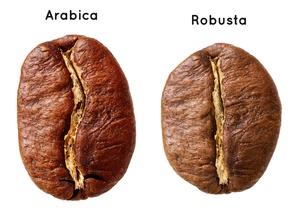
In America and all around, interest in food sourcing and sustainability is growing. Consumers are hip to not only health-related outcomes but also the history and science of food and drink. For the team at Coletti, this presents an opportunity to get involved and help you learn more about the drink that’s a regular part of your everyday lives.

Knowing more about coffee can impact both buying and drinking preferences. When it comes to coffee, there’s so much to know, from growing and harvesting to production and distribution to roasting and brewing. It takes a significant time investment to locate and digest all that information.
So our goal is to distill the facts into digestible bits here at our blog. As the late, great Maya Angelou once said, “When you know better, you do better.” Once you know more about coffee, maybe you’ll start reading labels for certain varieties, or you might realize that odd taste can be easily resolved by switching to a different roast.
Ready to gulp down some botanical science? Bottom’s up!
Coffee Is Derived from Two Main Species
While experts estimate there are 25-100 species of coffee plants, only two make the cut for the coffee brewed around the world everyday in homes and businesses: coffea Arabica and coffea canephora.
Arabica beans produce coffee that's more palatable. Contrasted with canephora beans, Arabica beans are higher in sugar and lower in caffeine, resulting in a fruity, sweet flavor. Single-variety coffees are always made with Arabica beans. Coffee blends will contain mostly Arabica beans mixed with beans from the canephora species, namely a variety called robusta.
If you’re drinking instant coffee—and why anyone would do such a thing?—you’re drinking perhaps the only coffee made purely from robusta beans. While we generally don’t think of caffeine as having a taste, it turns out that the high caffeine cont ent of robusta makes for a bitter bean.
ent of robusta makes for a bitter bean.
Cheaper and hardier than Arabica, robusta is the stunt double of the coffee world, whereas Arabica is the star. Many coffee producers use it as a filler bean, giving a flavor kick to blends while lowering their costs. In Italy, robusta is routinely added to espresso to replace some of the caffeine lost to the dark-roast process. Although robusta lacks the clout of Arabica, it’s no less important to the world market.
Remember, Arabica and canephora are two species of the coffee plant. Now we’ll talk about varieties.
What Is a Coffee Variety?
We don’t generally make the connection between our morning brew and the plant from which it comes. So the scientific aspects of the coffea plant, like its taxonomy (classification system), are also pretty far from our minds. However, the science of coffee is what gives us the many choices we make when shop for our favorite brands and blends.
The taxonomy of the coffee plant follows the typical ranking of kingdom, phylum, class, order, family, genus, species, with the addition of variety at the end. It’s scientific variety that gives us such a literal variety to choose from. Arabica beans come in thousands of varieties, although not nearly all of them are cultivated for commercial use.
Coffee and the Consumer
The coffee plant was discovered in the 11th century. Since that time, coffee-producing countries, in concert with growers, botanists, and other experts, have done the legwork to help us arrive at the present. All the while, new varieties will be discovered and other countries will enter the market.
As consumers, we get to decide what we like from the many types of coffee out there. Then we brew and enjoy. While we’re at it, why not learn a little along the way?
Do you have a favorite variety or blend? Share with us in the comments below!

